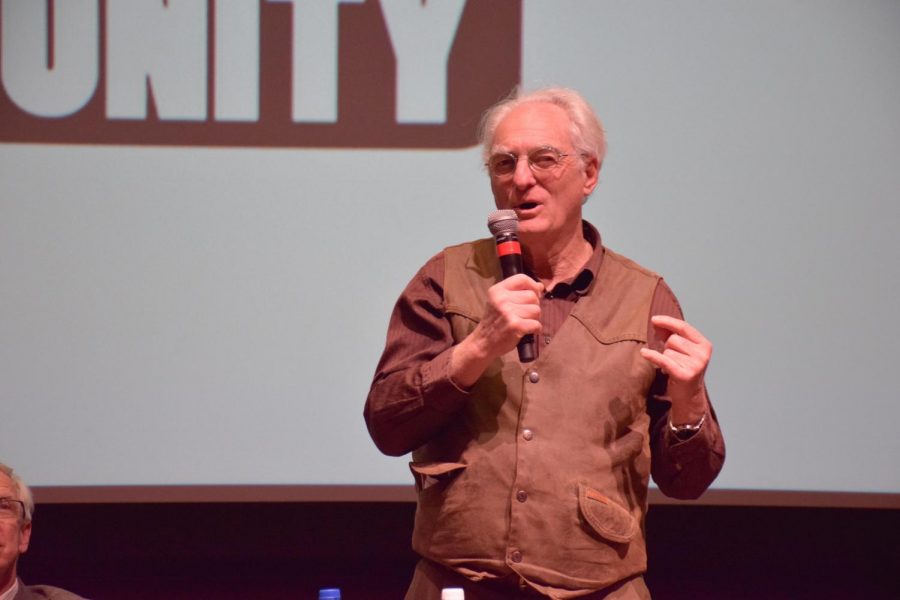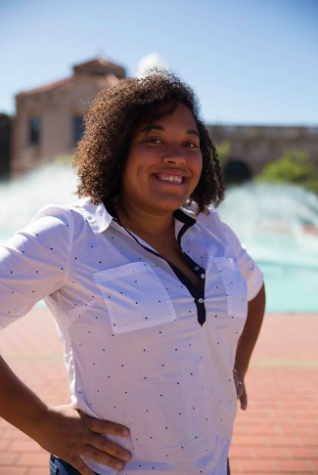When the Rim Fire in Tuolumne County became fully contained in September 2013, it was on record as the third largest fire in California’s state history, according to the California Department of Forestry and Fire Protection.
Burning almost 257,314 acres in less than a single month, the Rim Fire lasted from Aug. 17 to Sept. 6, 2013, Cal Fire reported. It then became the inspiration for a documentary film about the progressively worse Californian wildfires in the 2000s.
“(The Rim Fire) was an example of a different kind of fire — it was really a poster child for the ‘megafire,’” filmmaker Stephen Most said during a panel at the Conrad Prebys Aztec Student Union at San Diego State on Feb. 12, 2019.
Wildfire documentary “Wilder than Wild: Fire, Forests and the Future,” was screened preceding the panel as part of a One SDSU Community event. Directed by Kevin White and written by Most, the documentary describes the history of fires in California and recent megafires.
The filmmakers define megafires as “wildfires that cover at least 100,000 acres, burning a larger proportion of the land at high intensity,” according to the movie’s website.
Cal Fire reports that 15 of the 20 largest fires in California’s recorded history have taken place since 2002.
While wrapping up the film, a new “largest wildfire” in California — the Thomas Fire of Ventura and Santa Barbara counties — burned 281,893 acres, destroyed 1,063 structures and killed two people in December 2017.
Less than a year later, and only four months after the release of “Wilder than Wild,” the Mendocino Complex fire in Northern California burned 459,123 acres, setting a new state record, according to Cal Fire.
During the panel, Cal Fire Deputy Director Mike Muller said the large, extreme fires that have occurred throughout the state have become normal events.
“If you talk to any firefighter, regardless of the patch on their shoulder, the Camp Fire set a new normal, and that term ‘new normal,’ it’s not ‘new’ anymore,” Muller said. “This is the ‘normal.’ We are living in it.”
The film details some of the issues causing an increase in megafires in recent years, including climate change, drought cycles, high fuel build up of dried plant materials and the destruction of trees by bark beetles, all of which make the forests more vulnerable to fire.
High-intensity fires continue to increase in frequency, but as U.S. Forest Service fire ecologist Philip Riggan said, the science has not caught up as a way to evaluate and mitigate the damage from these events.
“These folks that are doing this incredible job on the ground and saving lives and working to protect property, they’re dealing with the ‘art of fire,’” Riggan said. “We need, from our university background here, to do more to try and build the ‘science of fire.’”
Riggan said he is working to create a model that accurately emulates the behavior of these large fires, but such simulations are still under development.
“We don’t even really understand exactly how fire spreads,” Riggan said. “When I saw the film tonight, one of the things that I kept concentrating on was looking at how fast the flames were moving.”
The film also highlighted some short-term solutions that may help to decrease these events over time. Long practiced as a form of forest management by some indigenous Californian tribes, prescribed fires are now starting to be implemented as a preventative measure to large, unmanageable wildfires.
Advocating for more people to become actively involved in ecological preservation and fire prevention, Most said he hopes the film will inspire others to get involved.
“One way to avoid (megafires) is by being proactive and saying, ‘OK, we need to burn some of this landscape so that we don’t have a huge fire under conditions we don’t want,’” Most said. “Our whole attitude has to change about our relationship with fire.”












